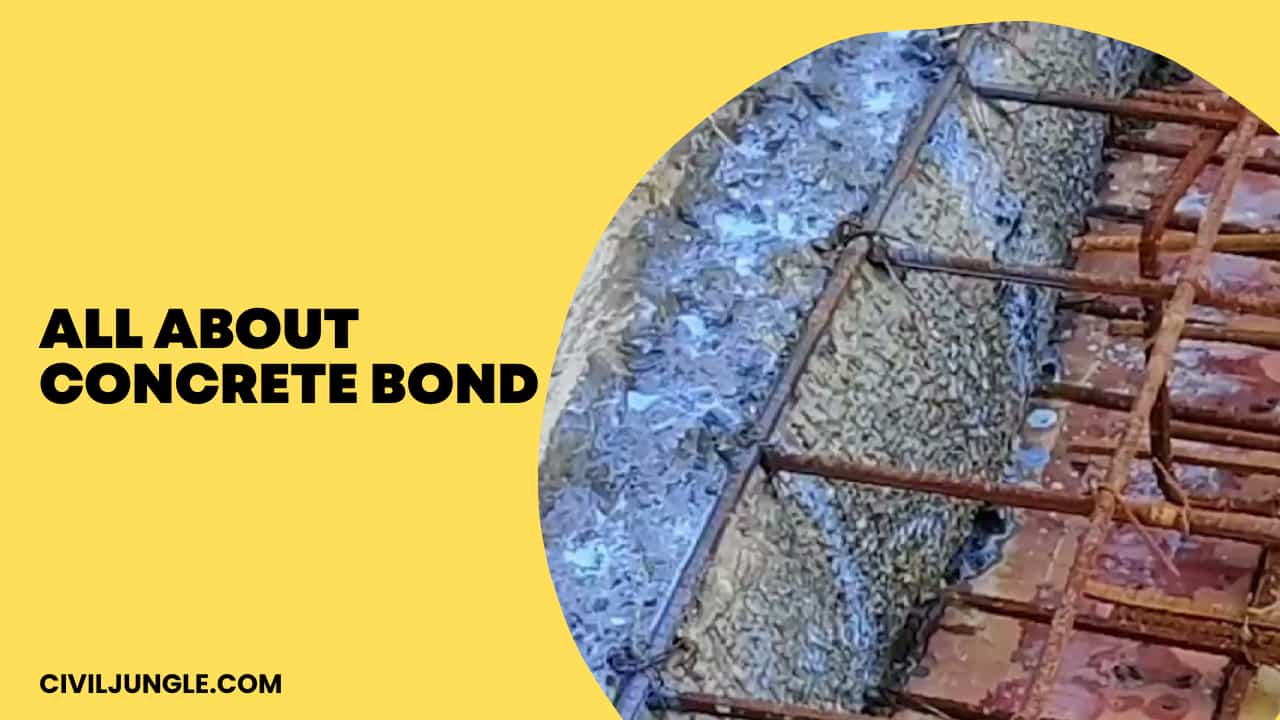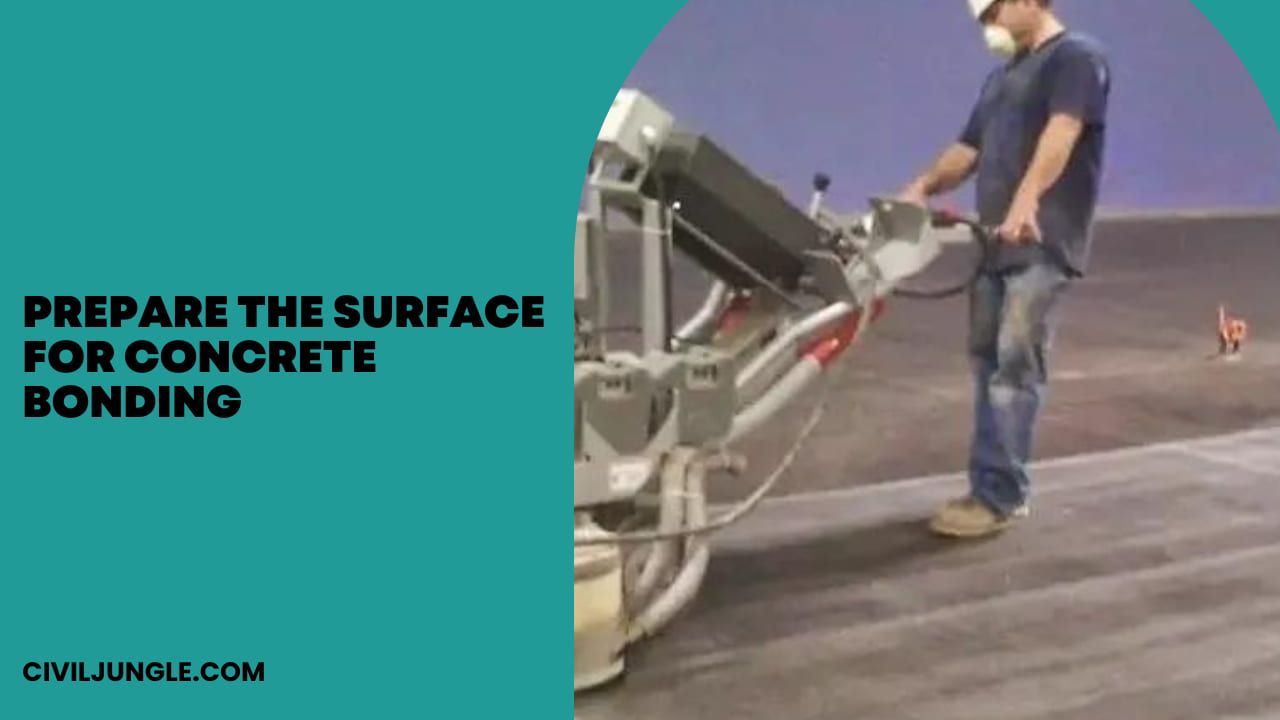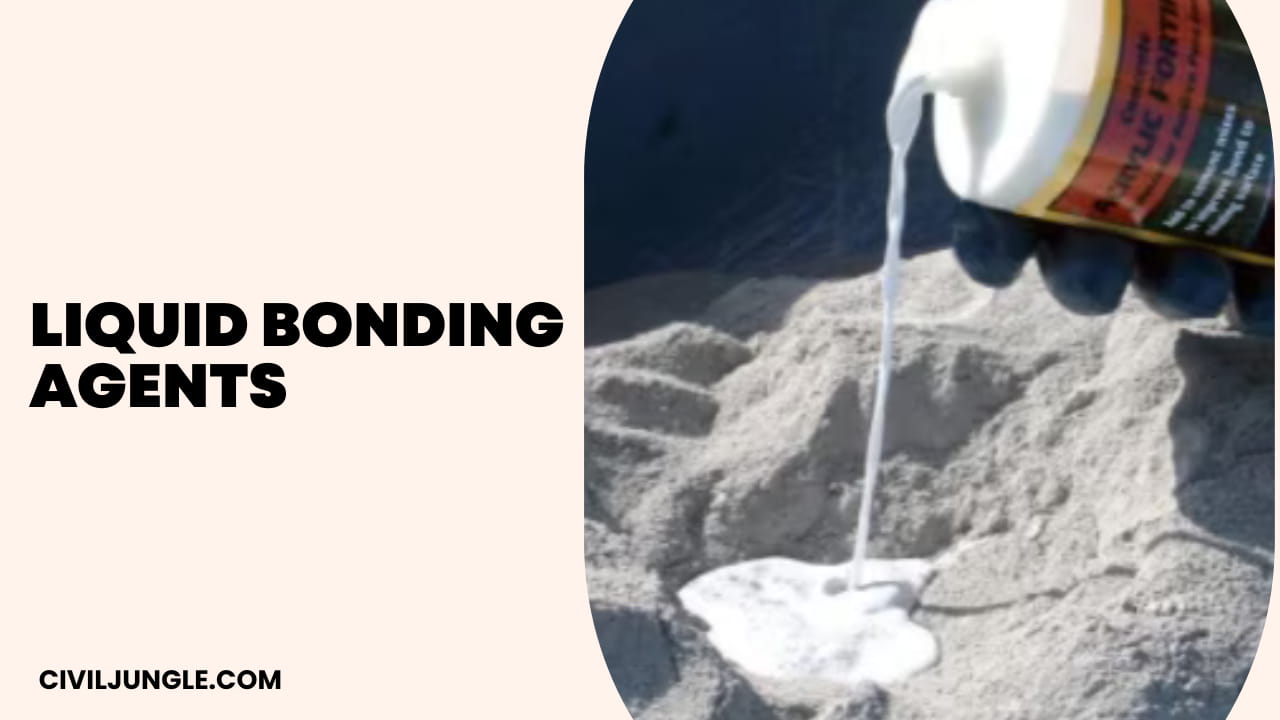Will Concrete Bond to Concrete?
Important Point
Concrete is a building material with high compressive strength. But it does not have a bonding ability. Concrete will deteriorate over time.
When it does, we either have to repair or replace it. We need a bonding agent if we want to bond dry concrete to wet concrete.
We use Mechanical reinforcement such as rebar or wire mesh to attach concrete structures to each other, but we need a chemical bonding agent to make concrete bonds.
An existing concrete slab Apply a chemical bonding agent to the concrete slab with a roller or brush.
Once the concrete dries, new wet concrete poured onto existing concrete will adhere. When we pour fresh wet concrete over dry concrete, it’ll dry as an independent layer.
Pouring 3 inches of new concrete on a 5-inch slab doesn’t create an 8-inch slab. What we get is two slabs sitting on each other.
After using a bonding agent, the two layers stick together. They’ll still be two separate layers but stuck together tightly.
Also Read : Concrete Slab Weight Calculator
How Concrete Adhesion Works?
Concrete bonding agents are natural materials that join old and new concrete surfaces.
Concrete is a building material made from cement, rock, sand, water, and admixtures. Dried concrete doesn’t have any natural bonding agents.
A bonding agent helps the different concrete layers behave like a single layer, increasing the structure’s strength.
The bonding agent is applied over the former surface of the concrete so the new layer of concrete successfully adheres to the old coating.
Why Do You Need to Use a Concrete Bonding Agent?
The mixture of cement and concrete doesn’t contain any natural bonding agents. When a concrete floor surface is damaged, there is a choice to either demolish the floor or resurface the existing concrete.
If the foundation is still structurally sound, Removing the entire floor and re-pouring is costly and a waste of time and money.
A further solution is to apply new concrete on the surface of an old surface. When fresh concrete is added to the top of a current layer of concrete, the two won’t join together due to inadequate bonding.
Once the top layer is set, it simply sits on the top of the layer as a top layer. Concrete is poured before it gets hard.
Prepare the Surface for Concrete Bonding
It is mandatory to have a clean surface. Surface preparation for the concrete repair work is important for developing a strong bond with the new concrete.
The concrete surface consists of dust, grease, oil, sand, or grit blasting efflorescence; the bonding agent will not work properly.
Ensuring that the bonding agent works properly on the concrete surfaces is important. In this article, we discuss the different steps for preparing the surface.
Step 1: Clean the Surface
Firstly it is essential to have a clean surface. The bonding agent will not work correctly if the existing concrete surface consists of dust, oil, grease, or efflorescence. This step ensures the bonding agent works well on the concrete surface.
Step 2: Prepare the Mixture
The container of bonding agent is shaken well before use. The chemical is poured into a separate bowl and diluted with water according to consistency.
Now we can use this mixture as a primer. The concrete chemical might not work properly, so following the instructions mentioned in the container is essential.
Step 3: Placing the Concrete Bonding Agent
We need to follow standard instructions to produce and place the concrete. After mixing of bonding agent with concrete, we immediately applied it to the surface.
The primary coating dries off and loses its adhesion after some time, so spread the mixture when it is tacky and not dry completely.
Choose a Bonding Method:-
There are various types of concrete bonding agents used in construction:-
1. Latex Emulsions
Latex emulsions are commonly used as oil-in-water type emulsions in cementitious compositions.
These emulsions contain more than 50% water in some compositions. Some bonding agents have more resistance to water than other bonding agents.
Latex emulsions contain more than 50% water in some compositions. The constitution of latex emulsions is stable in water & cement systems. There are three ways to change latex emulsions into helpful bonding agents.
2. Acrylic Latex
This agent is mainly used to bond fresh concrete with a surface of old concrete. Acrylic Latex Bonding Agents are milky white, combining polymers and co-polym45% solid content. Apply it on the surface with either a brush or a roller.
3. Styrene Butadiene
Styrene Butadiene is a type of latex emulsion agent that is a co-polymers, and it is compatible with cement.
It may solidify if SBR latex is at high temperatures for an extended period. It is used for waterproofing roof slabs, basements, hollow slabs, water tanks, sunshades, etc.
It can be used as a plaster bond within 45-60 minutes. It is used for the treatment of leaching and saltpeter action. SBR latex is also milky white, like Acrylic latex.
4. Polyvinyl Acetate Latex(PVA)
Polyvinyl Acetate latex (PVA) is used for repair applications in the construction industry.
There are two types of Polyvinyl Acetate latex.
- Non-Re-Emulsifiable PVA
- Emulsifiable
4.1. Non-Re-Emulsifiable PVA
Because of its compatibility with cement, it is used as a bonding agent. PVA latex is utilized as a binder for cementitious water-based paints & waterproofing coatings.
When applied, this bonding agent builds a thin layer highly resistant to water and ultraviolet rays.
4.2. Emulsifiable PVA:
When an emulsifiable PVA is applied on the surface, it produces a film that is getting softened and rewetted with water if necessary.
PVA latex is used as a bonding agent for plaster. Polyvinyl Acetate Latex (PVA) utilization is limited to areas with no possibility of moisture infiltration to the bond line.
5. Epoxy resin:-
Epoxy resin is the most versatile of all concrete bonding agents. It is ideal for lightweight parts & high performance.
Because of their high compressive strength, chemical resistance, strong adhesion, and other unique properties, it is widely used in construction.
Epoxies bond well with almost every material when the surface is properly prepared. Epoxy Resin is classified according to type, class, and grade.
American Society for Testing and Materials classified the epoxy-resin bonding systems classification based on specific aspects of class type, grade, and color.
Based of Type, It Has Seven Types:-
- Type 1:- This epoxy resin is mainly used to bond fresh concrete with old hardened concrete.
- Type 2:- Usually this type is commonly used to bond freshly mixed concrete with cured concrete.
- Type 3:- It is used as a binder in epoxy mortars and concrete. It bonds with the skid-resistant materials to the cured concrete.
- Type 4:- Usually used in load-bearing applications. This type of Epoxy resin is used as a binder for epoxy mortars and concrete.
- Type 5:- This bonds hardened concrete together with freshly mixed concrete.
- Type 6:- It is used for bonding and sealing segmental precast elements with internal tendons.
- Type 7:- When temporary post-tensioning is not applied as in span-by-span erection, it is for segmental precast elements used as a non-stress carrying sealer.
Based on Grade:-
Based on grade classification is as follows:
- Grade I: Mainly consists of materials with low viscosity suitable for injection into the cracks and where the flow is required.
- Grade II: It is used for general concrete bonding purposes. This type consists of materials with medium viscosity.
- Grade III: The epoxy resin comprises materials with non-sagging consistency.
Based on Class:-
It is based on the test temperatures. The classification is as follows:-
- Class 1:- In this class, temperatures should be below 5°Celsius.
- Class 2:- In this class, the temperature range should be 5°Celsius to 15°Celsius.
- Class 3:- In this class, the temperature should be above 15°Celsius.
Also, Read: How to Replace A Fence Post Without Removing Concrete?
Liquid Bonding Agents
Polyvinyl Acetate(PVA) offers excellent water resistance, aging characteristics, and ultraviolet stability.
For the repair works in concrete, this agent is mainly used. PVA offers excellent ultraviolet stability, aging characteristics, and water resistance.
Liquid bonding agents are the best way to bond dry concrete to wet concrete.
The Best Concrete Bonding Agent
Concrete is one of the important building materials.
The best concrete bonding agents must be easy to apply and use. It provides great adhesion and enhances the concrete and bond strength.
Different Types of Concrete Bonding Agents Used in Construction:-
- Quikrete 1 Gal. Concrete Bonding Adhesive.
- Quikrete 1 Qt. Acrylic Fortifier.
- SikaLatex 1 Gal.
- Loctite PL Premium Polyurethane Construction Adhesive.
- Liquid Nails – LN-905 Landscape Block Adhesive.
Also, Read: MS Plate Weight | Unit Weight of MS Plate
What Will Concrete Stick To?
Concrete usually sticks with Wood, plastics, metal, vinyl, Cloth, and other porous surfaces.
Concrete also sticks to porous surfaces, Plastic, and some rough metal. These Materials Will Stick To Concrete:
- Wood: Generally, concrete will stick to Wood poorly. However, you can do a few things to help improve the bond between the two materials. The roughness and more porous Wood will help to stick with concrete. You can also use a bonding agent or primer before applying the concrete.
- Plastic: concrete sticks very well with plastics. Use a release agent if you don’t want concrete sticking to your plastic tools and buckets.
- Cloth: splatter of concrete will stick to cloth and tarps.
- Porous Surfaces: If a surface is porous, concrete can stick easily. It works with the pores and forms a bond.
What Will Concrete Not Stick To?
Concrete doesn’t stick with molds, glue, paint, smooth metal, oil, mortar, other concrete, or most masonry products.
Concrete doesn’t bond with concrete if you want to bond with concrete, you need to use a bonding agent first. Bricks, stones, and mortar are not great at bonding.
Downsides of Bonding Concrete to Concrete
Although bonding concrete to concrete has some big benefits, there are downsides too. One of the major disadvantages the weight of concrete is high compared to its strength. When we pour concrete, it does not gain strength we have to wait till it gains strength.
Adding new concrete over existing concrete increases the height of the slab. Usually new layer is thinner than the bottom so it cracks easier.
Will Cement Stick to Concrete?
No, cement will not stick to concrete. Concrete mix within the cement doesn’t contain any natural bonding agents.
So when fresh concrete is added on the top of an existing concrete, it doesn’t join together.
The cement within a concrete mix doesn’t contain any natural bonding agents – so when fresh concrete is added on top of an existing layer of concrete, the two won’t join together. Once cured, the new concrete will sit on top as a separate layer. This will not produce a strong, serviceable floor. When you’re joining two concrete slabs, connect the two with rebar to keep them at the same height. Drill the holes as deep as you can (the entire length of the bit) so the rebar fits snugly into the holes. Insert chunks of rebar and tie them into the grid. Yes, you can pour fresh concrete over existing concrete. As long as your concrete is in mint condition, this task is doable. If you decide to pour a new mixture over an old slab, be sure it is at least 2 inches thick. The best epoxy for metal is Loctite Epoxy Metal/Concrete, a two-part system consisting of an epoxy resin and a hardener. The resin and hardener are combined to create a durable, high-strength bond that dries in minutes and can be used for repairing, filling, and rebuilding all metal and concrete surfaces. You can’t use just any glue on a tough, porous material like concrete – you need a high-strength two-part epoxy glue for concrete. Apply to surface with a brush, roller, or paint-sprayer to the thickness of a coat of paint. Place new concrete, cementitious topping, portland cement-based stucco, or cementitious-based repair material as soon as the QUIKRETE® Premium Concrete Bonding Adhesive has dried. A drying time of 2 to 3 hours is typical. Best Overall. Quikrete 1 Gal. Concrete Bonding Adhesive. … Concrete Form Oil is a mixture of light-colored mineral oils (not to discolor the concrete) and special release agents that will react with the concrete to form a barrier preventing the concrete from adhering to either wood or metal forms. Concrete Form Oil may be applied by spraying, or brushing. These are the four steps in how to smooth concrete after it dries: Yes, you can pour fresh concrete over existing concrete. As long as your concrete is in mint condition, this task is doable. If you decide to pour a new mixture over an old slab, be sure it is at least 2 inches thick. Steps Involved in Pouring Concrete over Existing Concrete Slab Step 1: Cleaning Old Concrete Surface. Your new layer needs to be at least 2 inches thick. If it’s any thinner than that, it’ll easily crack under pressure and won’t adequately bond to your surface. Like this post? Share it with your friends! Suggested Read – Originally posted 2023-05-25 19:06:48. Will New Concrete Stick to Old Concrete
Joining Concrete Slabs Together
Can You Pour Concrete Over Concrete
How to Glue Metal to Concrete
Glueing to Concrete
How to Use Concrete Bonding Adhesive
Best Concrete Block Adhesive
Best Bang For the Buck. Quikrete 1 Qt. Acrylic Fortifier. …
Best For Cold Temperatures. SikaLatex 1 Gal. …
Best For Concrete Blocks. Liquid Nails – LN-905 Landscape Block Adhesive. …
Best Polyurethane. Loctite PL Premium Polyurethane Construction Adhesive.Oiling Concrete Forms
How To Smooth Concrete After It Dries
1. Remove all imperfections on the surface.
2. Vacuum up all debris and apply the adherent.
3. Apply a new layer of concrete.
4. Sand the surface and wash the concrete.
5. Apply a layer of vitrifier to protect the concrete.Can You Pour Concrete Over Existing Concrete
Adding a Concrete Step to an Existing Slab
Step 2: Setting Up Slab Perimeter.
Step 3: Pouring a Primer Coat.
Step 4: Pouring of Concrete.Minimum Concrete Thickness Over Existing Concrete







Leave a Reply